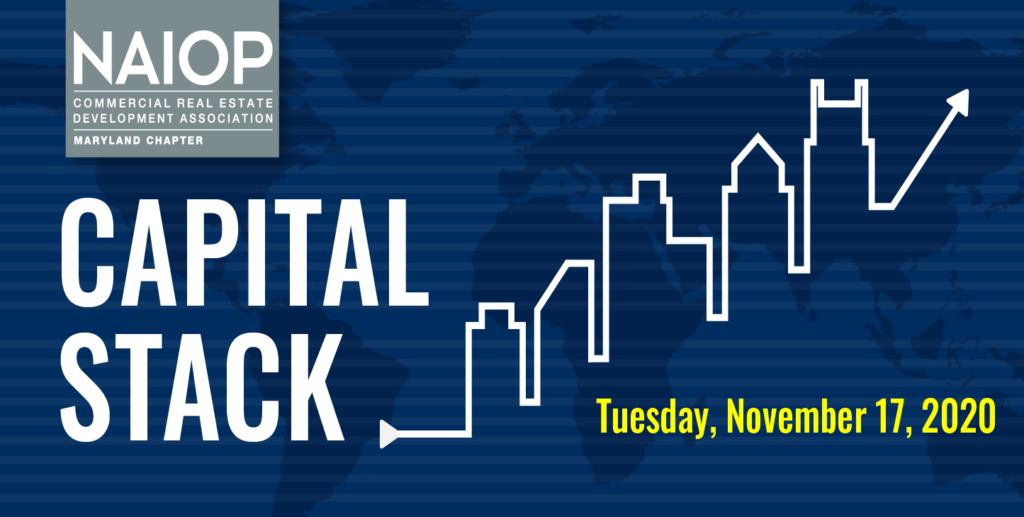The United States is about to enter a dark tunnel that will negatively impact the economy for several months but, upon its emergence early next year and buoyed by COVID-19 vaccines, nearly every commercial real estate asset class will be on the upswing with promising prospects expected for 2021. That was the conclusion of Spencer Levy, Chairman, Americas Research and Senior Economic Advisor for CBRE. Together with a team of CBRE researchers, Levy presented research at the recent NAIOP Maryland “Capital Stack” webinar.

“We’re in a much better place than you feel in your gut,” Levy said, “mainly because our schedules remain disrupted and we are beyond tired with the effects of the pandemic, but the future looks exceedingly bright for real estate. Of all the asset classes, industrial remains the shining star as we are experiencing record levels of leasing activity and pricing. Retail and the hospitality sector are disproportionately negatively impacted but we expect a comeback next year. It may take several more years for business and international uses to return to hotels. Volume in the capital markets is down approximately 40%, but the amount of equity is close to normal levels and we are seeing a lot of foreign money flow to the United States.”
Although more than 3.2 million square feet of sublease space is now available in the region Levy, who has studied the work-from-home phenomenon extensively, admits he is not sure if there will be a long-term secular shift in the way workers interact with the office environment. “Research emphatically suggests that people don’t go to the office because they need to but, rather, because they want to. We cannot accurately predict how much office space will be lost but believe the future remains bright. Tenants are slowly reengaging and believe this will be a long process to recovery. But we will get there.”
CBRE Research Director Wei Xie presented details that indicated Maryland lost one of every two leisure and hospitality jobs during the early stages of the COVID-19 pandemic and close to 400,000 jobs in total. However, by September, approximately half of those jobs were regained. She suggested that overall leasing volume remains down for this year. Meanwhile, construction activity has slowed significantly with almost no notable groundbreakings. The Greater Baltimore market, however, remains extremely stable with no major fluctuations due to the continued momentum in recession-resilient sectors such as cybersecurity, the expected uptick in the life sciences sector, and the relative affordability of area real estate.
The biggest factor to be wary of, according to Levy, is the possibility for “tax increases but what matters most is what occurs on the state rather than the federal level.” He added that the results of the presidential election should not impact real estate either way and “the industry should not be worried about the elimination of the 1031 Exchange mechanism which has been around since the 1920s.”
Other observations and predictions
- Ecommerce will fuel “hockey stick” growth in the warehouse/industrial sector in the immediate future but this asset class may have seen its best days with penetration eventually slowing.
- Office tenants are eschewing urban areas and searching for space in suburban markets, but these relocations will only be on a temporary basis.
- Data centers will continue to experience extremely strong activity to support the increased usage of Zoom and similar platforms including online banking. Northern Virginia is primed for more growth based on its fiber connectivity, lower energy costs, relatively low land prices and tax incentives.
- Gen Z represents the future of office space needs and, based on their #1 ranking in visiting malls and making purchases, this age demographic is motivated by cost and value. Space that delivers these attributes will do well with this segment of the population.
Click here to watch a video of the 2020 Capital Stack.